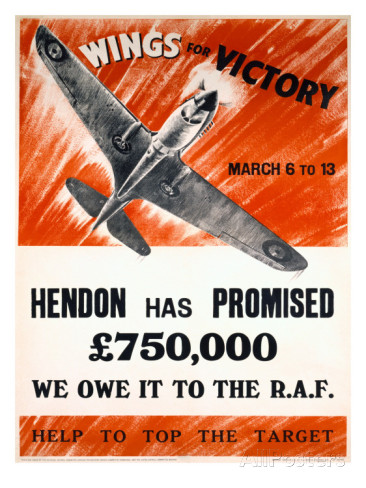Literature: WW2 - War Pictures by British Artists, Edited by Sacha Llewellyn & Paul Liss, July 2016, cat 42, page 81.
Nearly every town had 'Wings for Victory' fund raising weeks during which people were asked to contribute money for a Spitfire or a Wellington or Lancaster bomber.
Housewives were also asked to give aluminum pots and pans for melting down to make aircraft . Events were advertised through a series of posters some of which left space for overprinting so that dates and venues could be added for specific events.

Addressing crowds in Trafalgar Square, in 1943, Sir Robert Kindersley annoucned:
This campaign will give every free citizen to this free land an opportunity to express their admiration of, and gratitude to, the men of that superb force to whom the many owe so much. These "Wings for Victory" weeks are the nation's salute to the gallant men of the Royal Air Force, of the Fleet Air Arm, and of the Allied Air Force... In announcing the opening of the "Wings for Victory" Campaign I shall release thirteen hundred pigeons each bearing a message to one of our thirteen hundred savings committees throughout the country. These winged messengers, many of whom have seen war service, will I feel sure, prove to be harbingers of complete and outstanding success in this great Campaign.
This poster features the Curtiss P-40E, which the Royal Air Force named the
Kittyhawk Mk. IA. Though manufactured in the United States, it differed from
the American version in having British instruments, wireless and armaments
fitted in order to make it compatible to British-manufactured aircraft. It was
therefore easier to service and repair. Up-grading the engine from the original
American Allison to a Rolls-Royce Packard Merlin improved the performance,
but the Type was out-classed in North-west Europe and was relegated to the
North African theatre, though it was there used extensively by the RAF and
other Dominion Air Forces.
Early in the war, such aircraft were often named after the Borough that had paid for it and some had the heraldry of the town painted beside the cockpit.
We are grateful to Andrew Cormack for assistance.










